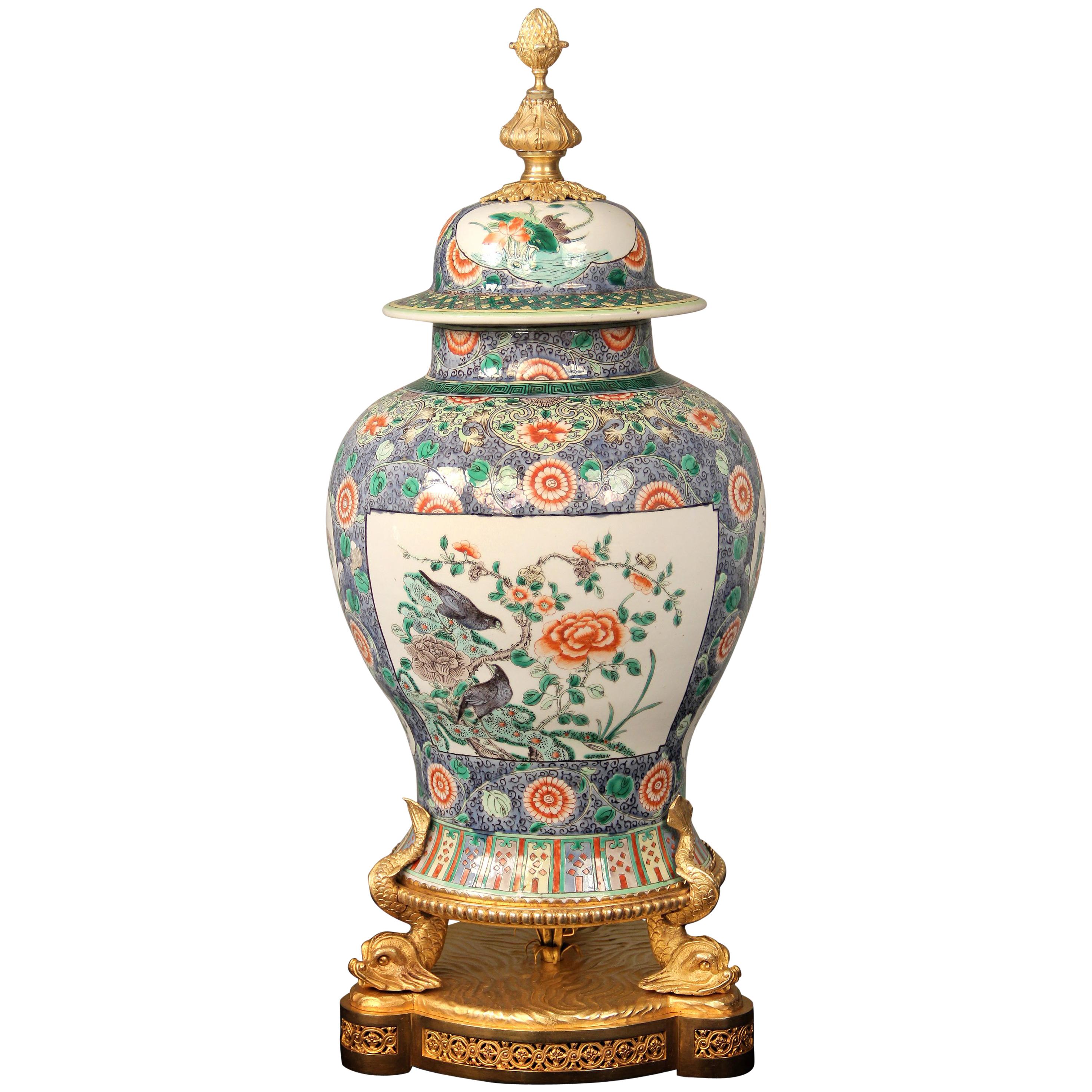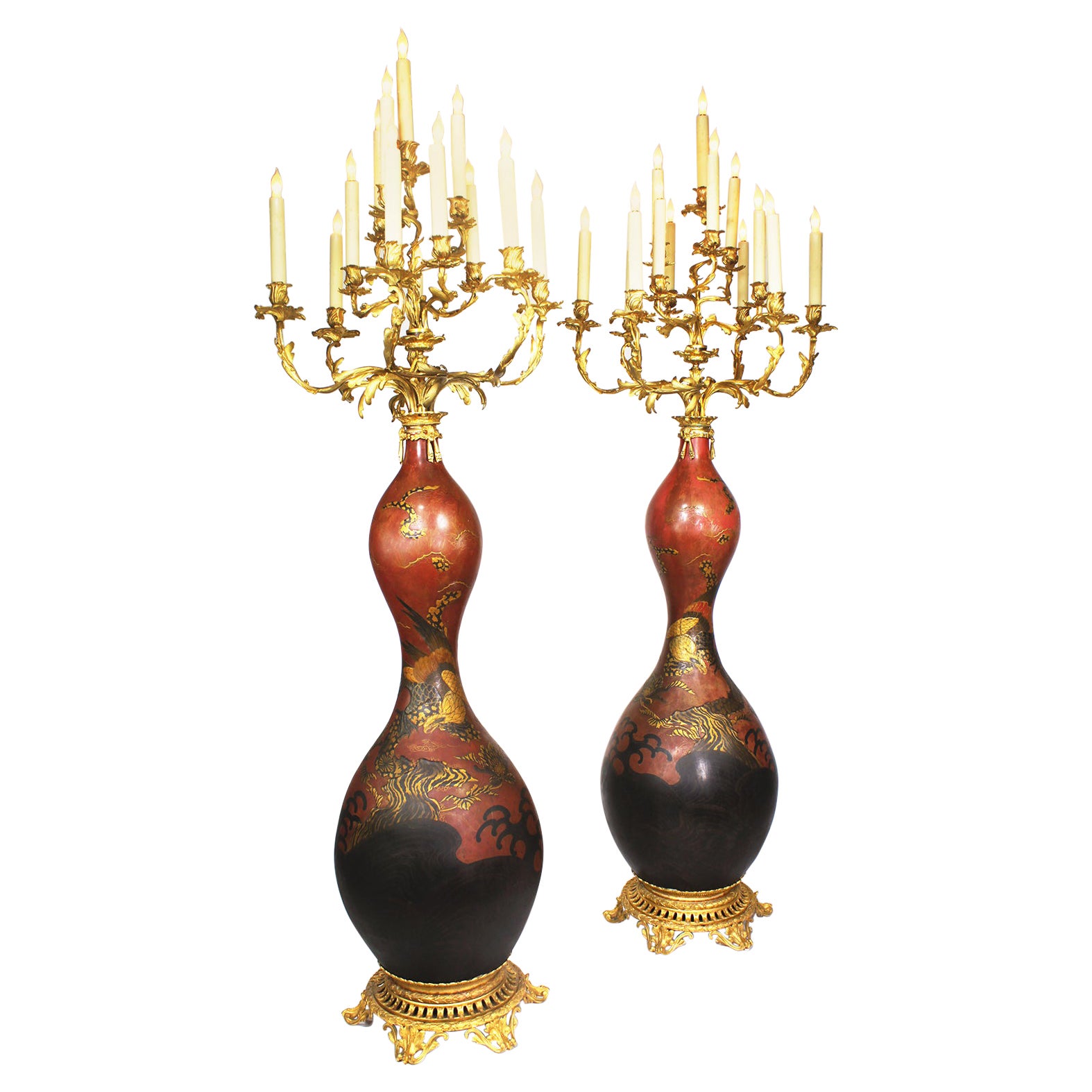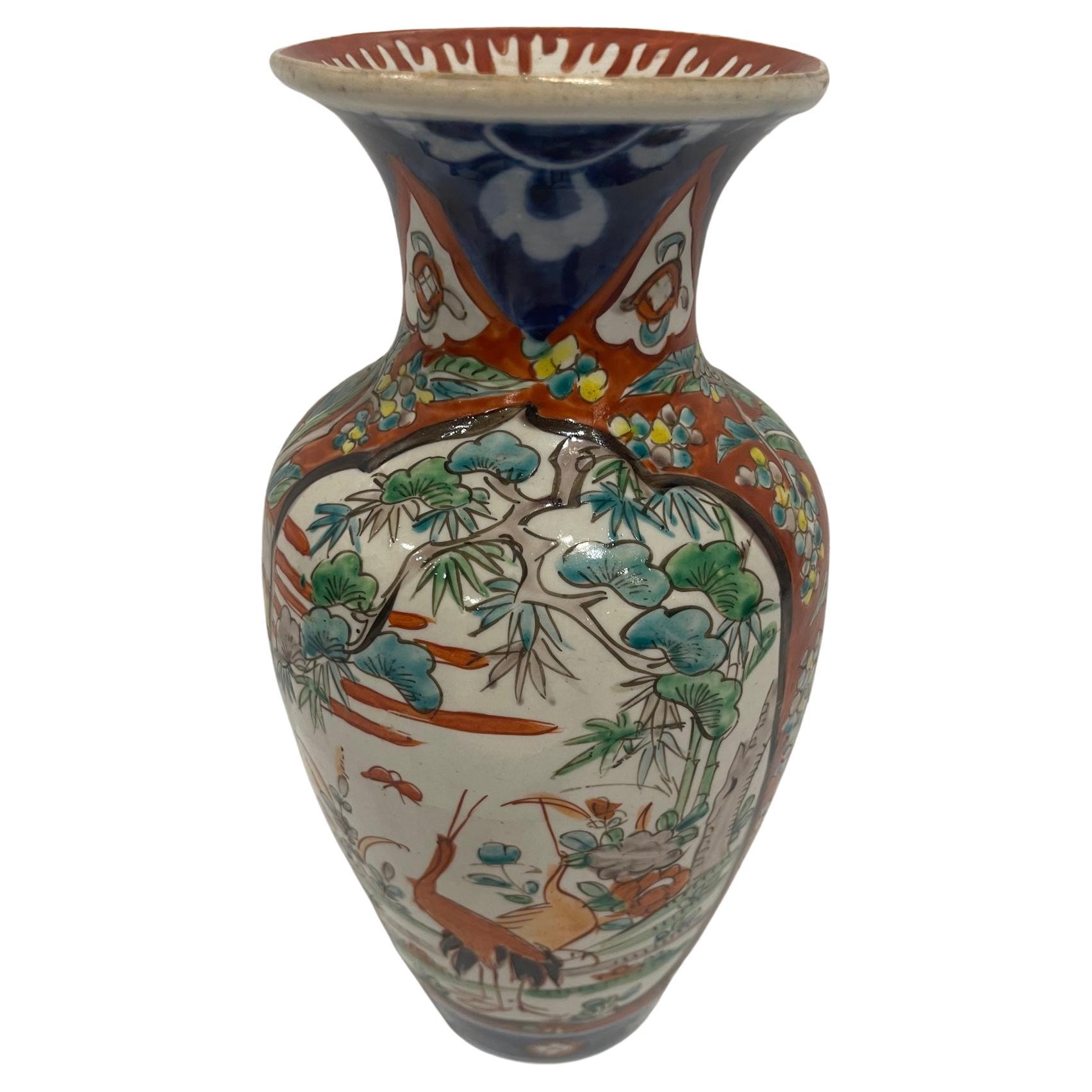Items Similar to 19th Century Pair / Gilt Bronze Mounted Imari Porcelain Vases
Want more images or videos?
Request additional images or videos from the seller
1 of 12
19th Century Pair / Gilt Bronze Mounted Imari Porcelain Vases
About the Item
Early 19th century pair of gilt bronze mounted imari porcelain decorative vases or urns. Each urn is in good antique condition with minor wear consistent with age or use. Each urn stand about 20 inches tall x 15 inches wide x 7 inches deep.
- Dimensions:Height: 20 in (50.8 cm)Width: 12 in (30.48 cm)Depth: 7 in (17.78 cm)
- Sold As:Set of 2
- Materials and Techniques:
- Place of Origin:
- Period:
- Date of Manufacture:Early 19th Century
- Condition:Wear consistent with age and use.
- Seller Location:Tarry Town, NY
- Reference Number:1stDibs: LU984820420972
About the Seller
5.0
Vetted Seller
These experienced sellers undergo a comprehensive evaluation by our team of in-house experts.
1stDibs seller since 2013
378 sales on 1stDibs
Typical response time: 3 hours
- ShippingRetrieving quote...Ships From: Tarry Town, NY
- Return PolicyThis item cannot be returned.
More From This SellerView All
- 19th Century Gilt Gold Porcelain / Bronze Mounted CenterpieceLocated in Tarry Town, NY19th Century hand painted gilt gold design porcelain with footed bronze mounted decorative centerpiece with side handles. The centerpiece is in great condition. Minor wear consistent...Category
Antique Mid-19th Century French Centerpieces
MaterialsGold, Bronze
- 19th Century Gilt Porcelain Decorative Pair VasesLocated in Tarry Town, NYMid 19th century pair gilt porcelain decorative vases with gilt gold handles and exterior painted scene details. Each vase / urn is in great antique condition. Minor wear consistent ...Category
Antique Mid-19th Century French Vases
MaterialsGold
- 19th Century Gilt Bronze / Porcelain Pair UrnLocated in Tarry Town, NY19th century gilt bronze mounted hand painted and crafted porcelain pair decorative covered urn / vase. Each urn features decorated figural design with bronze side handles with Greek mythological scenes. Each one in great antique. Minor wear consistent with age. Undersigned with blue beehive mark...Category
Antique 1830s Austrian Urns
MaterialsGold, Bronze
- 19th Century Pair Gilt Porcelain Decorative Urns / VasesLocated in Tarry Town, NYEarly 19th century pair gilt porcelain decorative urns / vases with gilt gold handles and exterior painted scene details. Each vase / urn is in great antique condition. Minor wear co...Category
Antique Early 19th Century French Urns
MaterialsGold
- 19th Century Bronze Mounted / Porcelain Covered UrnsLocated in Tarry Town, NY19th century French Sèvres-style porcelain gilt bronze mounted covered decorative urns / vases with gilt gold painted scene design details. Each urn is in good condition with wear co...Category
Antique 1850s French Urns
MaterialsBronze
- French Pair Gilt Bronze Mounted / Porcelain Pair Urns / VasesLocated in Tarry Town, NYFrench pair Sèvres-style gilt bronze mounted porcelain decorative vases / Urns with exterior painted design details. Each vase / urn is in good condition. Minor wear consistent with ...Category
Early 20th Century French Vases
MaterialsBronze
You May Also Like
- Palatial 19th Century Japanese Imari Vases with French Gilt Bronze Mounts, PairLocated in Vancouver, British ColumbiaAn impressive pair of late 19th century Japanese Imari porcelain vases decorated with colourful peacocks, other birds, flowers, chrysanthemums, manufactured for export to France wher...Category
Antique Late 19th Century Japanese Other Planters, Cachepots and Jardini...
MaterialsPorcelain
- Pair 19th Century Japanese Imari Porcelain & Gilt-Bronze Torchere CandelabraBy Imari PorcelainLocated in Los Angeles, CAA fine Pair of 19th century Japanese Imari Porcelain and French Gilt-Bronze Mounted Thirteen-Light Celadon Torchere Candelabra. The bottle-shaped Japonisme vases with a Royal red background, decorated with parcel-gilt and black soaring eagles in the hunt within a forestall scene. Each Vase fitted and surmounted with a French 19th century Louis XV Style 13-Light scrolled candelabrum and all raised on a circular pierced gilt-bronze plinth. circa: 1880. Imari Porcelain (????) is the name for Japanese porcelain wares made in the town of Arita, in the former Hizen Province, northwestern Kyushu. They were exported to Europe extensively from the port of Imari, Saga, between the second half of the 17th century and the first half of the 18th century. The Japanese as well as Europeans called them Imari. In Japanese, these porcelains are also known as Arita-yaki (???). Imari or Arita porcelain has been continously produced up through the present day. Characteristics Though there are many types of Imari, Westerners' conception of Imari in the popular sense is associated only with a type of Imari produced and exported in large quantity in mid-17th century. This type is called Kinrande. Kinrande Imari is colored porcelain with cobalt blue underglaze and red and gold overglaze. The color combination was not seen in China at that time. Traditional Ming dynasty color porcelain used dominantly red and green, probably due to scarcity of gold in China, whereas gold was abundant in Japan in those days. The subject matter of Imari is diverse, ranging from foliage and flowers to people, scenery and abstractions. Some Imari design structures such as kraak style were adopted from China, but most designs were uniquely Japanese owing to the rich Japanese tradition of paintings and costume design. The porcelain has a gritty texture on the bases, where it is not covered by glaze. There is also blue and white Imari. Kakiemon style Imari is another type of Imari, but it tends to be categorized separately in Europe. History "Imari" was simply the trans-shipment port for Arita wares. It was the kilns at Arita which formed the heart of the Japanese porcelain industry. Arita's kilns were set up in the 17th century, when kaolin was discovered in 1616 by the immigrant Korean potter, Yi Sam-pyeong (1579–1655). (He may also be known by the name, "Kanage Sambei".) Yi Sam-Pyeong, along with his extended family of 180 persons, left Korea on the offer of a privileged position in Japan. This decision was made after the occurrence of certain Japanese invasions of Korea. After Yi Sam-Pyeong's discovery, his kilns began to produce revised Korean-style blue and white porcelains, known as "Shoki-Imari". In the mid-17th century there were also a lot of Chinese refugees in Northern Kyushu due to the turmoil on Chinese continent, and it is said one of them brought coloring technique to Arita. Thus Shoki-Imari developed into Ko-KutaniImari. Ko-Kutani was produced around 1650 for both export and domestic market. Blue and white porcelain continued to be produced and they are called Ai-Kutani. Ko-Kutani Imari for the export market usually adopted Chinese design structure such as kraak style, whereas Ai-Kutani for the domestic market were highly unique in design and are accordingly valued very much among collectors. Ko-Kutani style evolved into Kakiemon style Imari, which was produced for about 50 years around 1700. Imari achieved its technical and aesthetic peak in Kakiemon style, and it dominated European market. Blue and white Kakiemon is called Ai-Kakiemon. Kakiemon style transformed into Kinrande in the 18th century. Kinrande used blue underglaze and red and gold overglaze, and later some other colors. Imari began to be exported to Europe because the Chinese kilns at Ching-te-Chen were damaged in the political chaos and the new Qing dynasty government stopped trade in 1656–1684. Exports to Europe were made through the Dutch East India Company, but the designation "Imari Porcelain" in Europe connotes Arita wares of mostly Kinrande Imari. Export of Imari to Europe stopped in mid-18th century when China began export to Europe again, since Imari was not able to compete against China due to high labor cost. By that time, however, both Imari and Kakiemon style were already so popular among Europeans, Chinese export porcelain copied both Imari and Kakiemon style, which is called Chinese Imari. At the same time, European kilns, such as Meisen also tried to copy Imari and Kakiemon. Export of Imari surged again in late 19th century (Meiji era) when Japonism flourished in Europe. Thus in western world today, two kinds of Imari can...Category
Antique 19th Century Japanese Japonisme Floor Lamps
MaterialsOrmolu, Bronze
- 19th Century Canton Porcelain Vase Mounted on Gilt BronzeLocated in NICE, FRSuperb in both size and artistry, this big, measuring 38 cm in height, Canton famille porcelain vase hails from the 19th-century era of Napoleon III. Adorned with a plethora of capti...Category
Antique 19th Century French Chinoiserie Vases
MaterialsBronze
- Late 19th Century French Gilt Bronze Mounted Chinese Porcelain VaseLocated in New York, NYA Great Quality Late 19th Century French Gilt Bronze Mounted Chinese Porcelain Vase Decorated with birds and floral arrang...Category
Antique Late 19th Century French Belle Époque Vases
MaterialsBronze
- 19th Century Octagonal Imari Porcelain Lidded Vase Mounted on a Bronze Dore BaseLocated in New York, NYLarge octagonal Imari porcelain vase with finial cover and 4 bronze doré claw feet on base (19th century).Category
Antique 19th Century Chinoiserie Vases
MaterialsBronze
- Imari Japanese Porcelain Vase, 19th CenturyLocated in Savannah, GAImari Japanese Porcelain Vase, 19th CenturyCategory
Antique 19th Century Japanese Vases
MaterialsPorcelain
Recently Viewed
View AllMore Ways To Browse
Pair Gilt
Antique Decorative Vases
Antique Decorative Vase
Pair Gilt Bronze
Gilt Bronze Mounted
Gilt Bronze Mount
19th Century Gilt Mount
19th Century Pair Vases
19th Century Antique Vase
19th Century Gilt Vases
19th Century Gilt Vase
Pair Gilt Vases
Porcelain And Bronze Mounted
Bronze Mount Vase
Antique Imari Porcelain
Imari 19th
19th Century Imari
Pair Gilt Bronze Vases





